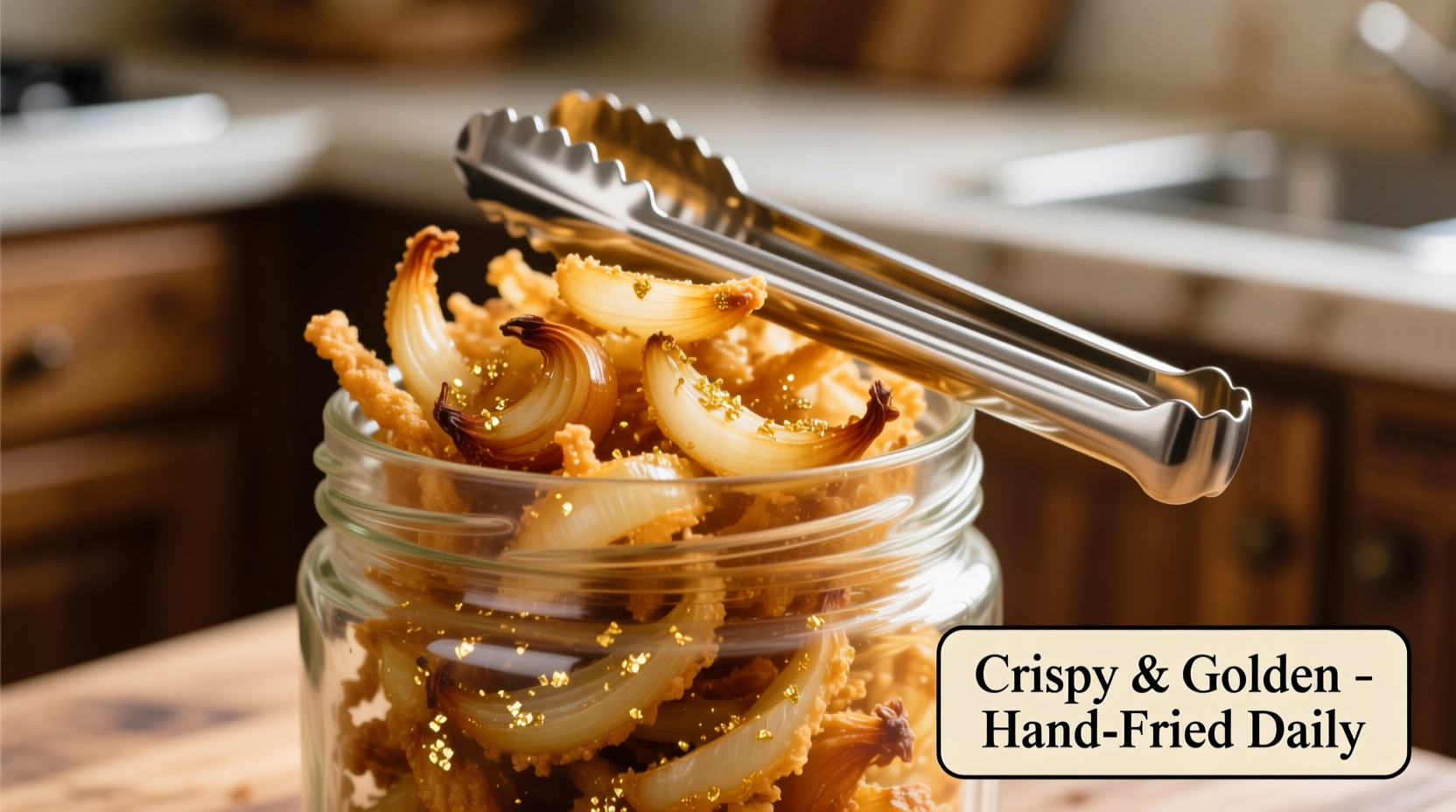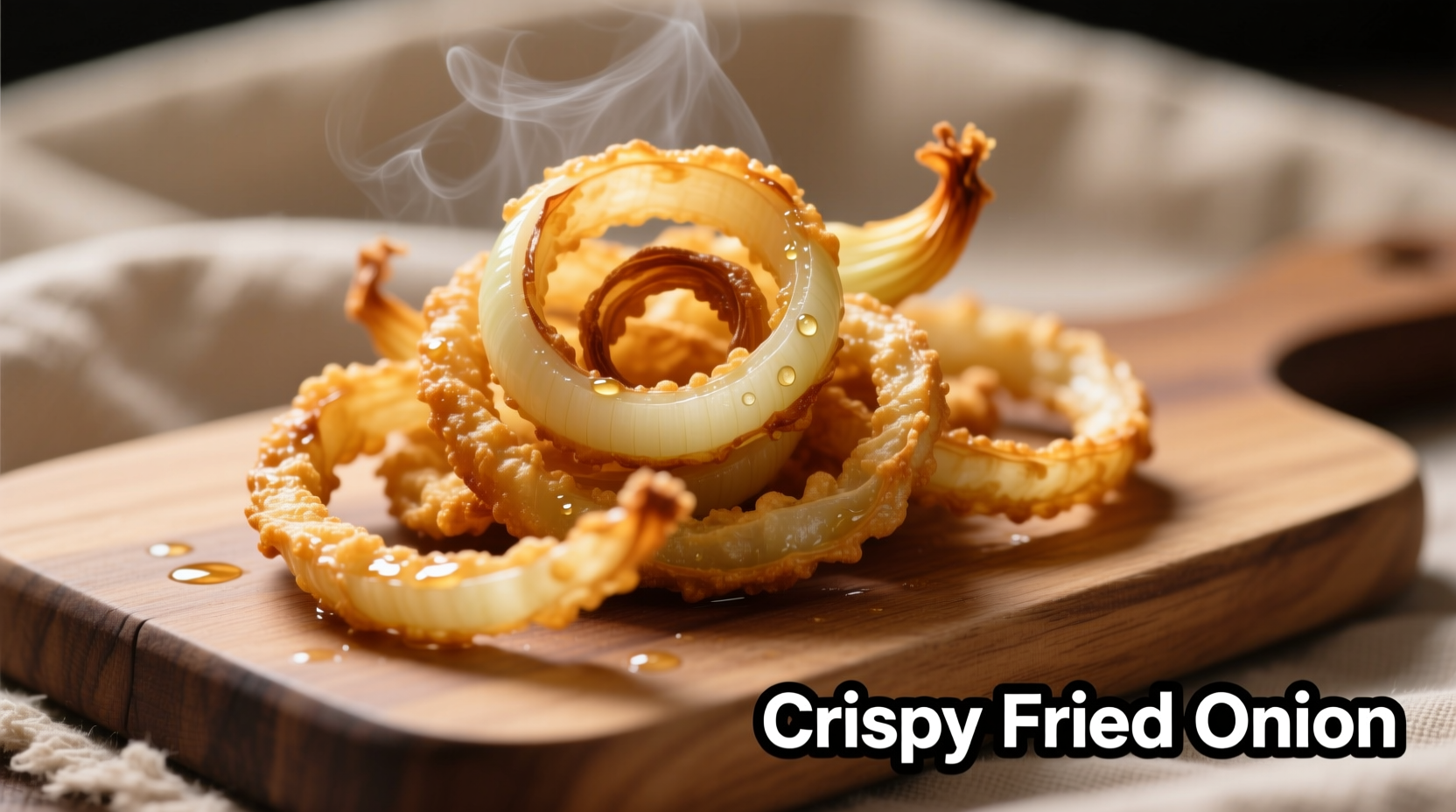The Science Behind Perfectly Crispy Fried Onions
Creating restaurant-quality crispy fried onions at home isn't just about frying technique—it's food science in action. When onions hit hot oil, two critical reactions occur simultaneously: the Maillard reaction creates complex flavors and golden color, while water rapidly evaporates from the onion's cellular structure. According to research from the USDA National Institute of Food and Agriculture, onions contain approximately 89% water, which must be expelled completely to achieve true crispness.
Professional chefs like Antonio Rodriguez emphasize that temperature control is non-negotiable: "Oil below 325°F (163°C) causes onions to absorb excess fat and become greasy, while temperatures above 375°F (190°C) burn the exterior before moisture escapes. The sweet spot is maintaining 350°F throughout frying."

Onion Selection: Not All Varieties Deliver Equal Crispness
| Onion Variety | Sugar Content | Best For Crispness | Flavor Profile |
|---|---|---|---|
| Yellow Onions | 4.2-4.7% | ★★★★★ | Rich, balanced sweetness |
| Red Onions | 3.8-4.2% | ★★★☆☆ | Sharp with metallic notes |
| White Onions | 4.0-4.5% | ★★★★☆ | Clean, pungent bite |
| Shallots | 7.5-8.2% | ★★☆☆☆ | Burns easily, delicate texture |
Data from the USDA Agricultural Research Service shows yellow onions' optimal sugar-to-water ratio creates the ideal conditions for both caramelization and structural integrity during frying. Their thicker cell walls maintain shape better than more delicate varieties.
Step-by-Step Preparation Protocol
Pre-Fry Treatment (Critical for Crispness)
- Slice uniformly to 1/16-inch thickness using mandoline (variance causes uneven cooking)
- Soak in ice water for 15 minutes (reduces enzymes causing browning)
- Thoroughly dry with salad spinner then paper towels (water causes oil splatter and sogginess)
Frying Process: Temperature Control is Key
"Most home cooks fail because they don't monitor oil temperature," explains Rodriguez. "Use a clip-on thermometer and maintain 350°F ±5° throughout frying."
- Oil selection: High smoke point oils like peanut (450°F), avocado (520°F), or refined canola (400°F)
- Fry in batches: Overcrowding drops oil temperature (max 1 cup onions per quart oil)
- Timing: 3-5 minutes until golden (lighter than you think—they continue cooking off-heat)
- Draining: Immediately transfer to wire rack over paper towels (not directly on towels which traps steam)
Avoiding Common Pitfalls: Contextual Limitations
Crispy fried onions excel in specific applications but have clear limitations:
| Ideal Applications | Poor Applications | Reason |
|---|---|---|
| Burgers, sandwiches | Hot soup toppings | Steam from hot liquids causes rapid sogginess |
| Cold salads | Long-cooked stews | Moisture rehydration destroys crisp texture |
| Cold noodle dishes | As primary garnish for >2 hours | Humidity causes gradual softening |
Storage Science: Preserving Crispness for Weeks
Proper storage extends shelf life dramatically. Research from FoodSafety.gov shows moisture is the enemy of crispness:
- Immediate cooling: Spread in single layer until completely cool (15-20 minutes)
- Airtight containers: Glass jars with oxygen absorbers maintain crispness 4x longer than plastic
- Freezing option: Store in vacuum-sealed bags for up to 6 months (thaw at room temperature)
- Revival method: 30 seconds in 300°F oven restores crispness to slightly softened onions
Global Culinary Applications
Crispy fried onions transcend cultural boundaries with distinct preparation styles:
| Cuisine | Preparation Style | Signature Dish Application |
|---|---|---|
| French | Thinly shaved, light golden | French onion soup topping |
| Indian | Deeper fry, darker color | Biryanis and kebabs |
| Mexican | Quick fry, minimal browning | Tacos and quesadillas |
| Chinese | Finely shredded, double-fried | Wonton and noodle garnish |
Flavor Enhancement Variations
Elevate basic crispy onions with these chef-approved techniques:
- Spiced version: Toss with 1/4 tsp smoked paprika and 1/8 tsp cayenne per cup before frying
- Umami boost: Sprinkle with 1/2 tsp mushroom powder immediately after draining
- Herb-infused oil: Steep rosemary or thyme in oil 20 minutes before frying (remove before heating to 350°F)
- Sweet-savory option: Light dusting of maltodextrin powder after cooling adds subtle sweetness without moisture











 浙公网安备
33010002000092号
浙公网安备
33010002000092号 浙B2-20120091-4
浙B2-20120091-4